I'm new to Mixed-signal design and I'm having trouble deciding how to connect my digital and analog ground. I'm doing a 4 layer design, so I have a split ground plane.
As I understand, since I'm using the same supply the grounds should get together at some point. I'm inclined to use the USB shield as that point where the grounds come together, as I think this would clearly define the returning paths for the digital and analog currents.
I'm not sure if this is a good practice, or if there is a better solution.
I'd be glad to get any feedback on this. Thanks!
Edit: This is not a high frequency design (the main Microcontroller works at 16 Mhz). The different planes are required as the manufacturer states it as a requirement in the datasheet. The power comes from a USB connector that lowers the voltage to 3.3V through a regulator ADP3333. From there I get the "digital power" which comes directly from the regulator and then I get the "analog power" which is the regulator output passing through a ferrite bead.
The IC is Analog devices AD5933 network analyser. http://www.analog.com/en/products/ad5933.html
Re-edit: My main question is:
Is it ok to connect both grounds through the USB chasis? Like this?



